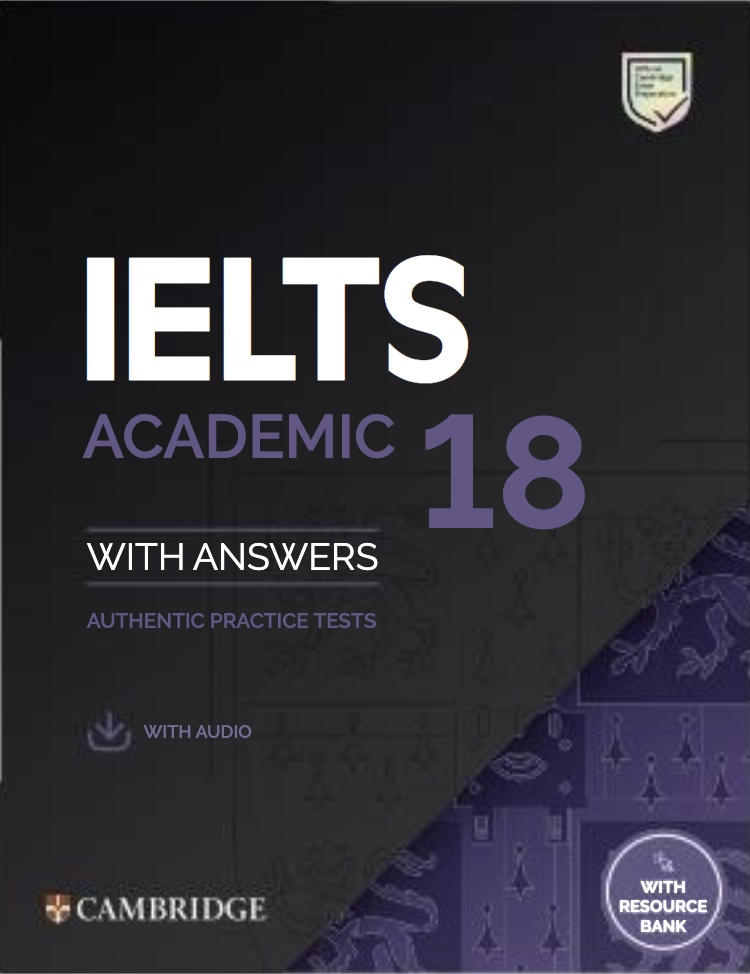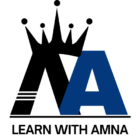If you are here, that means you have decided to sit for the IELTS exam and want to prepare for it so that you can achieve your required bands on the first attempt.
Academic Ielts or General IELTS
First of all, you must decide which IELTS you require. There is an Academic IELTS and a General IELTS. If, like me, you are taking IELTS to pursue higher education abroad or sit for PLAB, then you will need an Academic IELTS. General IELTS is for those who are applying for immigration or work visas.
Computer-based or Paper-based IELTS

Next, you must decide whether you want to appear in the computer-based or the paper-based IELTS. Both have pros and cons and making a decision can be difficult. To help you decide, I have written in detail about both formats here: Paper-based vs Computer-based Ielts
Now, coming to the preparation part, I am sure you would have many questions in your mind, such as:
- How to prepare for IELTS as a beginner?
- Can I prepare for IELTS at home by myself?
- How much time do I need? Can I prepare for IELTS in a month?
Here, I will answer all these questions one by one.
To effectively prepare for IELTS, you must acquaint yourself with the components/modules of IELTS.
Structure of IELTS
IELTS has four sections: Listening, Reading, Writing, and Speaking. In each module, you get bands out of 9, and then the average is calculated, which is your overall IELTS score.
Each section of IELTS follows a particular pattern; if you understand that, it becomes easier to score well. To do that, you need to buy Cambridge IELTS books which have all the IELTS past papers.
Now, I will tell you the step-wise approach to preparing for and acing IELTS.
After you have bought the Cambridge IELTS books, do one complete test of listening, reading, and writing. Time yourself. (We will leave speaking for the time being).
Now, using the key given, mark your listening and reading test. Check the band you are getting. However, you cannot objectively score yourself on the writing task, but you can assess whether you were able to complete tasks one and two within 1 hour.
If you score above 30/40 in listening and reading tests, congratulations! You are almost ready. All you need to do is do 3-4 listening and reading tests, and see if your score is improving. If it isn’t, identify where and in what type of questions you are losing marks.
Do a few more reading and listening tests and try to identify the types of questions asked in different parts. The test pattern remains the same, so you will have similar questions in the original test.

Structure of each section of IELTS
Listening:
By now, you must have identified that the listening test comprises 4 sections, each part having around 10 questions.
The first section is usually a conversation, often telephonic, between two people, you must listen carefully for names, addresses, dates, days, times, prices, locations and numbers.
The second section is usually a monologue describing a map, a visit to some area, a building layout or a plan. You need to listen actively for directions, descriptions, instructions, etc. in the monologue.
The third section is a discussion between two to four people, usually two; the discussion would be around some topic, project, or experiment. In the conversation, they would mention various options and then arrive at a decision. The questions are usually in the BCQ type. You need to listen carefully to what they say and their final decision on every point. I think most people find these questions the trickiest because the discussion is often not straightforward, the speakers will discuss one option but then agree on a completely different one, and they will mention one thing but then an entirely different one, so you need to be listening very carefully to follow the conversation and their train of thought to be able to pick the right option.
Part 4 is again a monologue, a speech, about some scientific discovery or a new concept. Questions are usually fill-in-the-blanks type. You need to listen carefully and fill in the blanks from the words said in the speech.
Now that you know the types of questions, you can see where your weakness lies and then identify why you are getting particular questions wrong. Now practice 3-4 more listening tests, score yourself and congratulations, you have prepared the listening part of the IELTS exam.
Reading:
After doing a few reading tests, you would know that it comprises 3 passages and a total of 40 questions, around 13 questions per passage.
The difficulty of passages increases from the first to the last. These texts are taken from magazines, books, newspapers, etc. The questions don’t ask you to write anything yourself. You have to pick words from the passage and write them. The questions are usually multiple-choice, fill-in-the-blanks, one-word answers, matching headings, and true/false/not given types. You will often need to go back to the passage to find the right answer.
Most people find matching the headings and True/False/Not given questions the most difficult. The trick to doing them right is practising. For the True/False/Not given questions, do not try to read between the lines or find the implicit meaning. If something is not clearly mentioned mark it as “not given”. True/False/Not given questions are also asked as “Yes/No/Not given. If the question asks you to write “Yes/No/Not Given” and you write True or False in answer, it will be marked as wrong.
Since you have only 60 minutes to do the three passages and the last passage is the most difficult, I suggest you spend around 15 minutes each on the first two texts and 25-30 minutes on the third passage.
Writing
Writing is the most difficult part of IELTS, and getting bands 7/7.5 above in IELTS writing is a real challenge. To get good bands you need to understand what to write and how to write in tasks 1 and 2.
Task 1
In Task 1, you are given some data, which you have to describe.
The question may give you maps, pie charts, line graphs, bar graphs, a diagram showing a manufacturing process, or tables with numbers/data. You need to describe the data to show trends and changes. Often there are two sets of data, and you need to describe the differences, similarities and changes over time. You do not have to write anything from your side. Just describe the data in a way that the trends are clear, and any person who has not seen the data can understand clearly from your description what it was about.
There is a pattern which you must follow when answering task 1.
You must write a one or two-line introduction in which you paraphrase the question prompt. Then you write an overview which tells in 2-3 lines the main trends or features of the data. Next, you must write two paragraphs describing at least two major similarities, differences and changes. Some people write the overview at the end, which is correct too, but it is better to write it after the introduction. You need to write at least 150 words. You can exceed the word limit by 10-20 words but should not write less than 150 words.
Remember, there is no conclusion in task one, and you must not write anything that is not shown/given in the data. Your job is only to describe the data.
Task 2:
In task 2, you are given an essay prompt and are asked to write at least 250 words. You can exceed the word limit but should not write below 250 words.
Many people get confused over different patterns for different essay types, which is a wrong approach. Every essay comprises an introduction, two to three body paragraphs, and a conclusion. Follow this basic pattern, answer the question prompt, write in simple English without grammatical and spelling mistakes, and with a flow and cohesion between your sentences and paragraphs, and you will score good marks.
You need to complete both tasks 1 and 2 in one hour. You will not be given any extra time. It is recommended that you spend 20 minutes on task 1 and 40 on task 2.
How to prepare for IELTs at home
I have already explained above how to prepare for listening and reading. These two modules only require you to practice to achieve a high band. You can easily achieve band 9 in both if you practice.
Writing is the only part of IELTS that requires extensive practice. Try doing tasks 1 and 2 in one hour and get your work checked by someone. If you cannot find anyone to assess your writing for you, you can do it yourself. To do so, type your written piece in Grammarly and check your grammatical mistakes.
Here are some tips you can follow to improve your writing score
1) Write in simple English. Avoid flowery language and the use of unusual words.
2) Only use a word if you are sure of its meaning and spelling.
3) Try to write your essay in a combination of simple, compound and complex sentences so that the examiner can see your range of written expression.
4) IELTS essay topics are really simple. You do not need extensive knowledge to answer them. There is no right or wrong answer. You will not be penalized for your ideas. Answer the question and pick the side on which you can generate more ideas. Stick to the topic and not digress. Write 2-3 relevant points/examples to support your stance.
5) Do not try to learn the GRE or any other vocabulary list for your IELTS test.
6) Avoid grammatical mistakes. If you are weak in grammar, you may need to ask someone to help you improve this area before you attempt IELTS.
7) Focus on punctuation. Punctuation mistakes will lower your score.
8) Use linking words to transition from one idea to another and from one paragraph to the next in your essay. Linking words improves the cohesion and coherence of your essay. Examples of linking words are: Firstly, secondly, lastly, in addition, furthermore, as a result, consequently, specifically, however, in contrast to, nevertheless, because, due to, since, in conclusion, likewise, thus, similarly, etc.
To see whether your patterns for task 1 and task 2 are correct, watch E2 IELTS YouTube videos and write an essay according to the pattern and style they tell you. Then check whether whatever you have written is according to the rules and advice given by them.
Speaking:
The fourth component of IELTS is speaking. The speaking test can be On the same day as your Listening/Reading/Writing test or another day. You will know this when you book the test. The speaking test is around 20 minutes long. The test can be face-to-face with the examiner, or it can be via a Google Meet at the test venue.
The speaking test comprises three sections.
The first section is an informal chat. The examiner will ask about yourself, your work/studies, family, house, hobbies, city, etc.
In the second part, you will be given a topic on which you have to talk about for 1-2 minutes. You will get one minute to think about what you will say. The topics are very general, and prompts are given to help you decide what to talk about. In my first IELTS exam, the topic I got was, “Talk about the time when you wore your best dress”.
In my second IELTS exam, the topic was “Talk about a class you attended that you enjoyed.” The prompts were
When was this class
What was it about
Who delivered it
what did you love the most about it, etc
In this section, the examiner will not speak anything and will quietly listen to you. Once the time is over, the examiner will cut you with a thank you.
The third section tests your ability to talk about complex and abstract ideas fluently. For example, I was asked whether I think learning foreign languages is good, what may be the reason people decide to learn a second language, which languages people in my country prefer to learn and why, and other questions along this theme.
How to prepare for speaking test
The only way to prepare for IELTS speaking is to speak in English, with yourself, with your friends and in front of the mirror. The more you speak in English, the more fluent you will get. You can go through past papers and see the prompts for the second section of the test and practice speaking on the topic.
Many people are fluent in English but fail to get a band 9. The reason is that they do not show off their English speaking skills sufficiently in the test. So here are a few tips to secure the highest band:
1) Do not give monosyllabic answers to any question. Give detailed answers to every question.
2) In the second section of the test, give an example from the past and use past tenses in all your sentences. Give another example from the present or future and use the appropriate tenses. This shows the examiner your range of language.
3) Do not speak out memorized answers. Practice speaking, but do not memorize any answers.
4) Be confident and speak a lot. The examiner is there to listen to you. Do not worry about your ideas. It is not your ideas but your language skills that you will be marked on.
